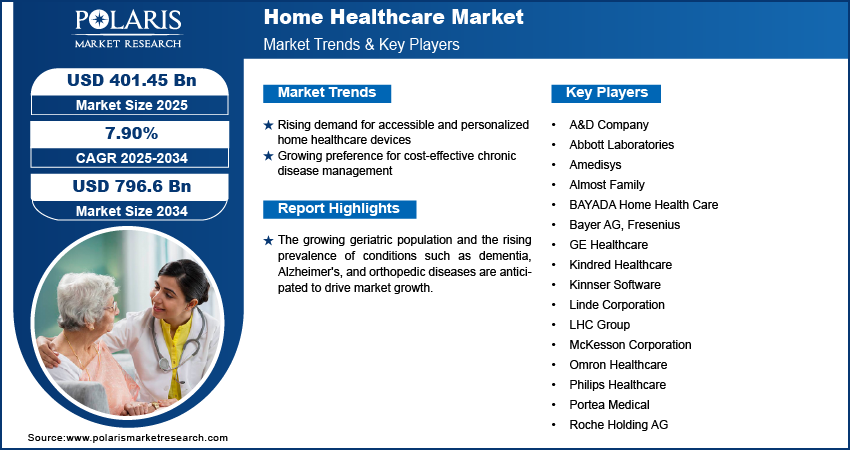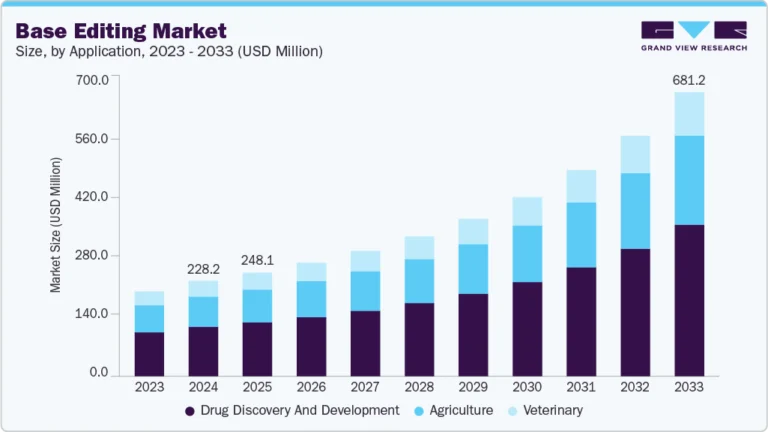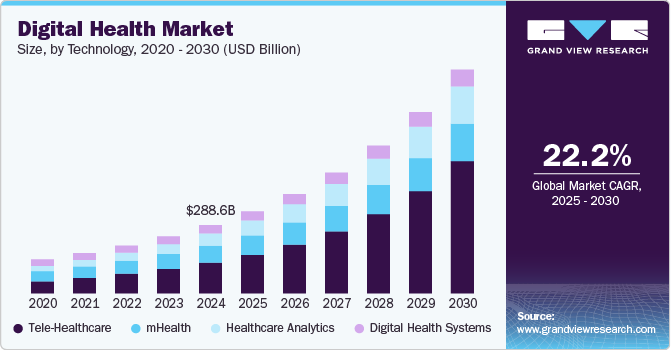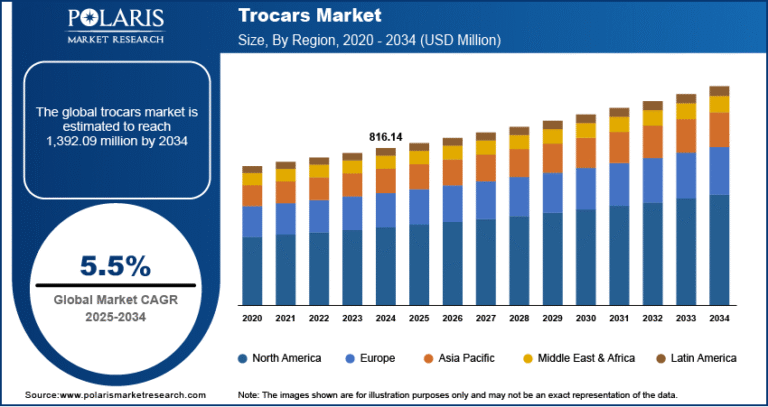Home Healthcare Market is set to reach USD 796.6 billion by 2034, with a steady CAGR of 7.90%.

The global home healthcare market was valued at USD 372.5 billion in 2024 and is projected to grow at a CAGR of 7.90% from 2025 to 2034. Growth is supported by aging populations and the shift toward cost-effective healthcare delivery.
Home Healthcare Market Trends & Insights:
- Rise of Remote Patient Monitoring (RPM): Integration of wearable devices and IoT-based tools is transforming chronic disease management at home.
- Technology-Driven Care Delivery: AI, mobile apps, and telehealth platforms are enhancing diagnostics, medication management, and patient engagement at home.
- Preference for Aging in Place: Older adults increasingly prefer to receive care at home, boosting demand for elder care services and assistive devices.
- Shift to Value-Based Care: Home healthcare aligns with value-based models by reducing hospital admissions and improving patient outcomes at a lower cost.
- Personalized Home Health Services: Care plans are becoming more customized, leveraging digital tools to cater to individual health needs and preferences.
Market Size & Forecast
Market size value in 2025 USD – 401.45 billion
Revenue forecast in 2034 USD – 796.6 billion
CAGR – 7.90% from 2025 – 2034
Request for Free Sample:
https://www.polarismarketresearch.com/industry-analysis/home-healthcare-market/request-for-sample
Home Healthcare Market Overview:
The Home Healthcare Market is expanding rapidly as aging populations, chronic disease prevalence, and healthcare cost pressures drive the shift from hospital-based care to home-based solutions. Home healthcare includes medical services delivered at a patient’s residence such as skilled nursing, physical therapy, remote monitoring, infusion therapy, and personal care.
Market Growth Drivers:
- Aging Global Population: The rise in geriatric populations, especially in developed regions, is a major driver of home healthcare services and devices.
- High Chronic Disease Burden: Increasing prevalence of conditions like diabetes, cardiovascular diseases, COPD, and arthritis necessitates ongoing, at-home care.
- Cost-Effectiveness of Home-Based Care: Home care is significantly more economical than prolonged hospital stays, driving adoption across public and private sectors.
- Expanding Telehealth Infrastructure: Widespread use of virtual consultations and digital diagnostics is improving access to home healthcare services.
- Government Initiatives and Reimbursement Policies: Supportive healthcare reforms and favorable insurance coverage are encouraging patients and providers to adopt home care models.
Market Challenges:
- Workforce Shortages: A limited supply of skilled Home Healthcare professionals, including nurses and therapists, may restrict service availability.
- Quality and Safety Concerns: Ensuring consistent quality of care, safety, and infection control at home can be more challenging than in clinical settings.
- Technological Barriers: Some patient populations, especially the elderly, may face difficulties using digital health tools effectively.
- Fragmented Care Coordination: Lack of integration between home healthcare providers and hospitals or primary care systems can lead to gaps in care continuity.
- Regulatory Complexity: Varied regulations across regions and challenges in compliance can hinder operational efficiency and expansion.






